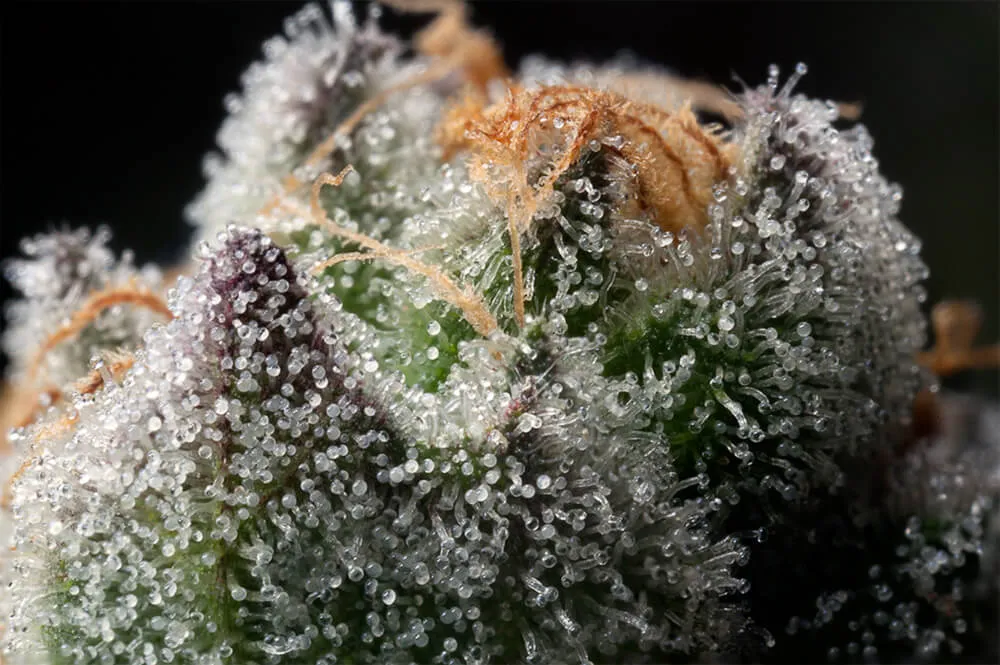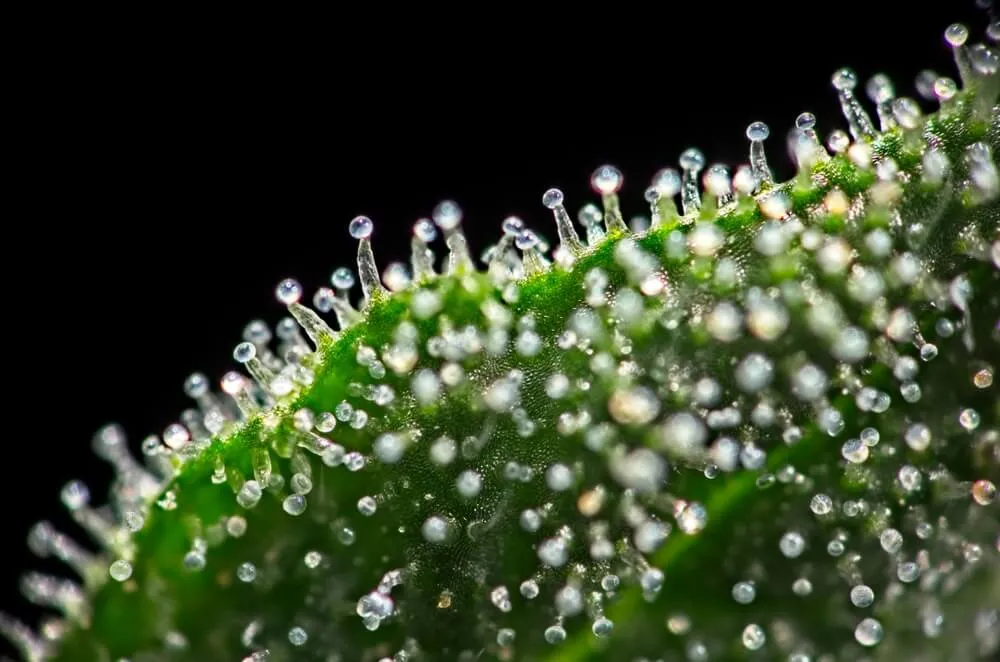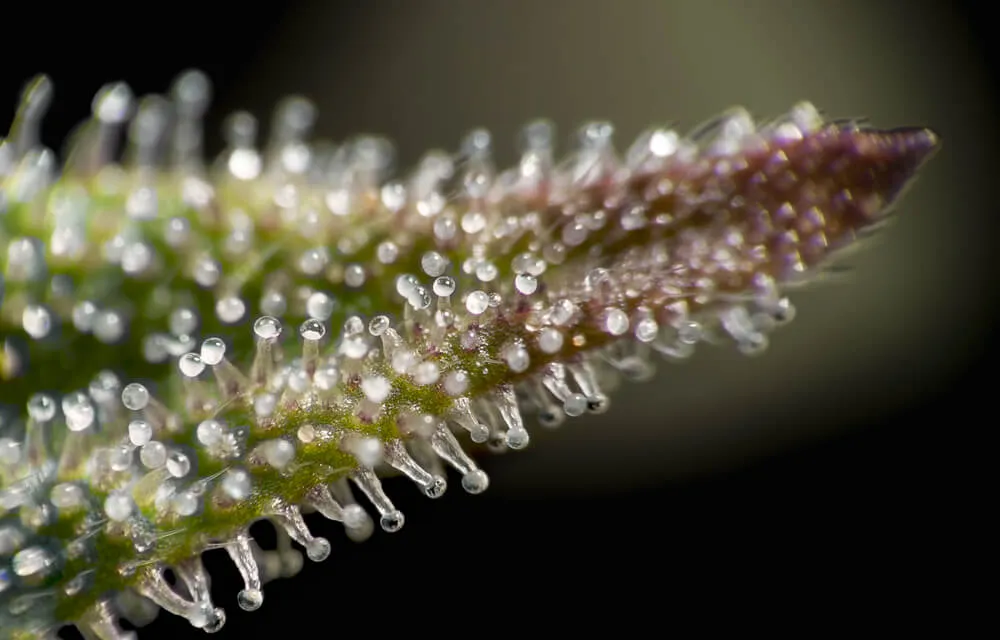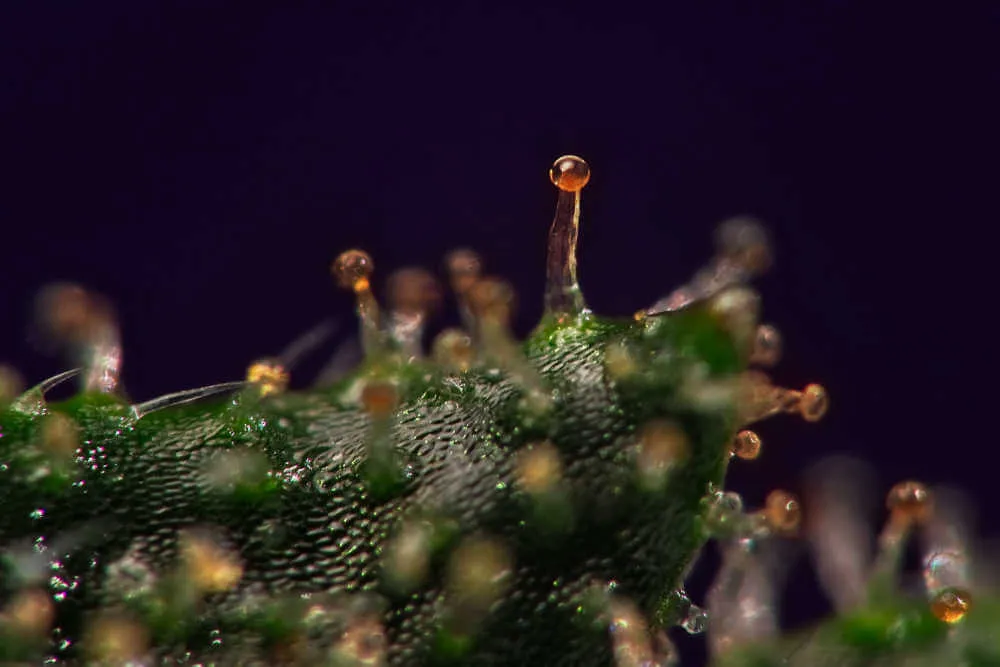When To Harvest Cannabis For Optimum Potency

Choosing the right time to harvest your crop can be the difference between a stellar yield... or a total flop. Knowing when to harvest your cannabis crop is essential to getting the quality bud you’re looking for. Harvest too early and the buds might not have had time to fully develop the THC you’re looking for. But, harvest too late and all that THC might be turned into CBN, which will provide a lazier, more sedative effect than the euphoric effects brought on by THC. So how do you know when that time is? Stick around and I'll explain the ins and outs of picking the perfect time to cut your ladies down.
I remember growing my first cannabis crop like it was yesterday. The excitement, the time spent checking every single detail, the days upon days of research making sure I wasn't messing something up.
But, as the final week approached (or at least what I thought was the final week), I realized I had no idea if the plants were actually ready to come down. Back to the computer I went, frantically googling what to look for. Sound familiar?
The amount of information on the perfect harvest time can be a tad overwhelming. And it's not just the timing you have to take into consideration, but also the process of harvesting, flushing the crop correctly (which changes depending on which cultivation style you have gone with), and the drying and curing of the buds once they've been chopped.
So here we are. It's about time we settled the debate once and for all, and laid out everything you need to know regarding harvesting cannabis. So hang about, it's harvest time!
What Do Trichomes Look Like When Ready To Harvest?
I might be stating the bleeding obvious for the majority of you lovely people, but those shiny little crystals that are hopefully dripping off your almost ready buds... yeah those are actually called trichomes. This is where all the dank goodness is stored, and they also hold the secret to working out when you should harvest your crop.
First things first, if you want to time the chop correctly you are going to need to grab either a jeweller's loupe or, even better, a USB microscope. To be honest, you'll be saving yourself a bunch of possible annoyance if you go for the microscope over the jeweller's loupe, as they're just much easier to use. Loupes are great for quick checks during the flowering period, but to get a solid idea of when to harvest cannabis is to use a USB microscope. Trichomes are just too small to see properly with the naked eye.
When you are starting to suspect that the ladies might be ready, grab a small bud and have a good old poke around with your microscope. You are looking for three distinct stages of trichome development;
1. Clear/Transparent - under ripe
2. Milky White - early ripeness
3. Amber/Brown - fully ripe/over ripe

How To Harvest Marijuana According To Trichome Ripeness
While there is no one true answer out there on precisely when to harvest cannabis, the majority of growers agree that harvesting when the trichomes are anywhere between 60-80% milky white, with the rest being amber/brown is perfect. Research indicates that this is when cannabinoid potency is at its peak.
Using your jeweler's loupe, microscope, or even phone camera (these days top tier smartphones usually have cameras with good enough zoom to see the state of the trichomes), you can start to have a look at where the trichomes are at in the last few weeks of flowering. Once you start to see some of the cloudy trichomes turning amber, you know that the harvest date isn't too far off.
But why even bother with all of this if every seed these days comes with a specific timing guide from the seed bank?
These guides are exactly that, guides. They are by no means exact and just can't be trusted. Every strain will show different characteristics between plants unless your crop is all clones from the same mother plant.
I'll say it again, the only way to really know when it's time to cut down the crop is by taking a good hard look at the trichomes. The reason why I suggest you purchase a microscope that can plug into your computer or phone is that it can be pretty tricky to focus clearly enough to really see what's going on. Microscopes offer the easiest focusing.
Understanding Trichome Ripeness
Now that we know how to tell which trichomes are ready for harvest, let's have a little chat about what those trichomes actually are and what they do.
Trichomes are the tiny crystals that cover the surface of cannabis buds and leaves. They appear as translucent/white ‘hairs’ and are sticky to the touch. These bad boys are important because it is within them that all of the cannabinoids, terpenes, and other goodies that make cannabis so great are produced.
Cannabinoids like THC and CBD interact with our bodies in various ways to produce different effects; from pain relief to relaxation and everything in between. Terpenes are what give cannabis its signature smell and taste, with each strain having a slightly different terpene profile. In recent years, research has also pointed to the fact that terps play a role in the overall effect of the smoke, and not just the taste and smell.

What do under-ripe trichomes look like?
Under ripe trichomes are fully clear/transparent and have not yet started to produce the proper amounts of cannabinoids and terpenes that we love so much. The effects of consuming these trichomes are lower, as they simply haven't had time to mature enough to do anything. They can also give a less calming effect when compared to riper trichomes.
These trichomes have not grown their bulbous head, and look more like tiny hairs under the microscope.

What do ripe trichomes look like?
Ripe trichomes are cloudy white and full of the cannabinoids and terpenes that we are aiming to harvest. These are the ones you want to be looking for when you cut down your crop. They have developed the bulbous head at this stage and will produce a more cerebral and psychotropic effect than amber/brown trichomes. This is due to the fact that CBD and CBN production is still low but THC levels are quite high, although they have not yet peaked.

What do over-ripe trichomes look like?
Overripe trichomes have started to turn amber/brown in color and have lost some of their THC potency, but are much higher in CBD and CBN. The effects of consuming these trichomes are more physical in nature and can range from couch-lock to sleepiness. These trichomes may have lost most of their bulbous heads at this stage.
Flushing your crop
The term 'flushing' refers to when cultivators stop giving the plants any sort of nutrients or additives in the feed water. This is done to help with the smoothness of the final product, and can also be used during the cultivation period to help remove leftover nutrient build up and fix any nutrient deficiency issues.
The timing of the final flush depends on how you have been growing the crop. Each and every growing medium (soil, coco-coir, hydroponics, etc.) reacts a little differently, so that's the first thing you need to take into consideration. You can also let the crop be your guide. If the lower fan leaves are still healthy, vibrant green then that's a sign that there is still an abundance of nutrients available for the plant. In this case, you might need to flush a few days longer than if the leaves have begun to yellow and curl.
For soil-based cultivation, there are a bunch of variables that can impact how long you should flush, but the most important is the water retention capabilities of the medium. If you have a sandier, less dense soil mix then a week flush will do just fine. If you have denser soil then you might want to flush for 9 to 10 days to ensure all the leftover nutes are either absorbed or washed away.
Coco-coir is a lighter medium than soil, and so it only needs a 4 to 5 day flush. You might even be able to get away with a 2 to 3 day flush if you have scaled back the feed schedule for a few days in advance.
For hydro setups, it depends on if you have root support or not. If you are using clay balls or some other support system for the roots then a 4 to 5 day flush will work great. If you are growing using aeroponics, deep water culture, or any other system where the roots are unsupported then a 2 to 3 day flush is perfect.
After flushing, the majority of growers also like to leave the plants in a totally dark environment with zero water for a day or two. This can trick the plant into squeezing out every last drop of stickiness.
When Should You Stop Watering Before Harvest?
The answer to this is multi-layered, and there is no one single answer. First up let's talk about flushing the crop, and then the option to completely stop watering altogether. Some growers don't stop watering or even feeding at all, but I am a big fan of both the flush and giving the plants zero water for the last day or two.
How much water should you use to flush your cannabis crop?
The most important thing when flushing is to make sure that there is enough runoff from your pots. The easiest way to ensure you are flushing correctly is to just double flush. start by slowly watering the plants until they can not hold anymore, wait for ten to fifteen minutes for the water to flush through, and then hit them again. It's also a good idea to use lukewarm water when flushing, or at least at room temp. The nutes that you are trying to wash away break down a little easier with slightly warm water, but don't over do it. Hot water is a no-go.
You should also, of course, be using water that has been set to the correct pH for your cultivation method. The easiest way to tell where the plants are at is to test the runoff with your ED (or TDS) meters. You should see the levels slowly begin to drop over the course of the flush.
What Are The Next Steps After Harvesting Cannabis?
The hard work doesn't stop when you finally cut that crop down. Next up you have to decide if you're gonna dive straight in and wet trim, or let the flowers dry first. Read our full guide on cutting down and trimming your cannabis plants to learn the next stage of the harvesting process.
-
20+ Years Experience
Over 500K seeds sold worldwide
100K+ Happy Customers -
Germination Guaranteed
Complete satisfaction or we will replace your order -
Dutch and USA Genetics
Master breeders inspiring strains from across the world -
1-5 Day Delivery - Guaranteed
Free Express Shipping to the US, Canada and UK








